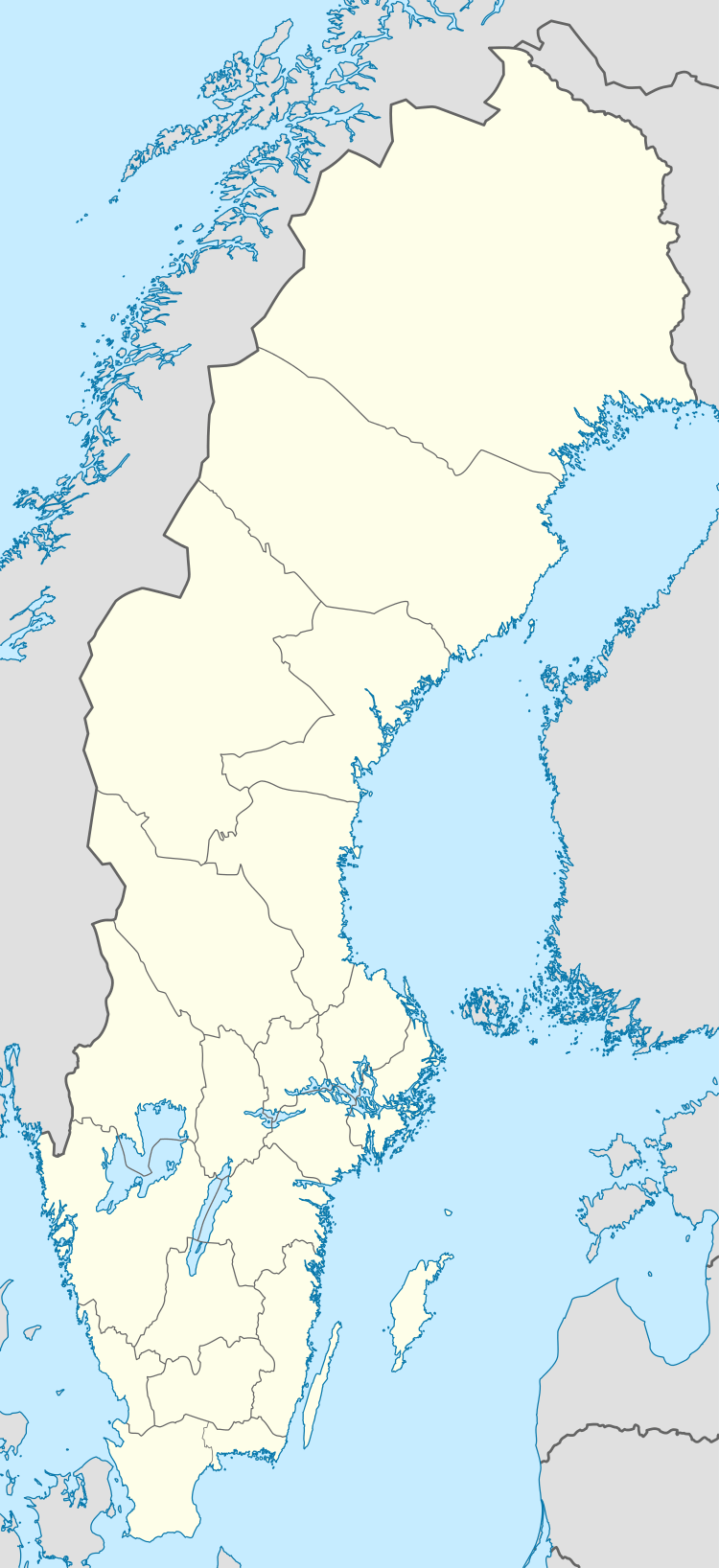Piteå archipelago
The Piteå archipelago (Swedish: Piteå skärgård) is a group of Swedish islands in the north part of the Bay of Bothnia. A few of the islands have small permanent populations, but most are used only for recreation in the summer months. They are icebound during the winter.
 Piteå archipelago | |
| Geography | |
|---|---|
| Coordinates | 65.194°N 21.787°E |
| Adjacent bodies of water | Bay of Bothnia |
| Administration | |
| Province | Norrbotten |
| Municipality | Piteå Municipality |
Location
The north of the bay of Bothnia contains a large archipelago area.[1] The islands in the Swedish sector make up the Norrbotten archipelago.[2] It is divided into the archipelagos of Piteå (550 islands), Luleå (1,312 islands), Kalix (792 islands) and Haparanda (652 islands).[3] Due to post-glacial rebound the land is rising at from 0.8 to 1 centimetre (0.31 to 0.39 in) annually, so the shoreline can retreat by as much as 100 metres (330 ft) in one person's lifetime. As a result, the islands are growing in size and the waters and harbors are becoming shallower.[4]
Climate
The archipelago is only 100 kilometres (62 mi) south of the Arctic Circle, so there is daylight for 24 hours in the summer, and full moon all day in the winter.[5] The waters around the archipelago are brackish, with less the 10% of the salt content of the Atlantic.[6] The sea freezes in January and remain frozen until March–April.[7]
Islands
Baggen is one of the largest islands, with an open-air chapel and rental cabins. Fingermanholmen is almost in the center of Piteå, accessible by boat or kayak in summer, and by ski in winter. Mellerstön has the only permanent residents of the archipelago. Piteå-Rönnskär belongs to Västerbotten County and is in the outer archipelago. Other islands include Inre Mörögrund, Mosesholmen, Hällskäret, Stenskär, Stor-Räbben, Svinöra and Vargön.[8]
Nature reserves
The Bondöfjärden Nature Reserve is about 10 kilometres (6.2 mi) to the southeast of Piteå.[8] The Bondöfjärden nature reserve, which covers Stenskär other islands, as well as Stor-Räbben and Vargön are state nature reserves, but Piteå municipality owns the land and manages the reserves.[9] Kluntarna in the outer archipelago, 4 kilometres (2.5 mi) from the mainland, is part of the Palta Pekens nature reserve. The Dömans nature reserve is about 2.5 kilometres (1.6 mi) south of Piteå, covering the islands of Gråsjälen and Döman to the south of Jävre-Sandön.[8]
References
Citations
- Leppäranta & Myrberg 2009, p. 55.
- Ankre 2005, p. 8.
- About the Bay ... Bottenvikens skärgård.
- Nilsson & Ankre 2006, p. 149.
- Nilsson & Ankre 2006, p. 145.
- Sweden: Rough Guides 2003, p. 403.
- Nilsson & Ankre 2006, p. 152.
- Skärgård:Sevärdheter: Piteå kommun.
- Naturen: Piteå kommun.
Sources
- "About the Bay of Bothnia". Bottenvikens skärgård. Archived from the original on 2013-10-05. Retrieved 2013-09-30.
- Ankre, Rosemarie (2005). "A Case Study of the Luleå archipelago, Sweden" (PDF). Mid-Sweden University. Retrieved 2013-10-04.CS1 maint: ref=harv (link)
- Leppäranta, Matti; Myrberg, Kai (2009-03-20). Physical Oceanography of the Baltic Sea. Springer. p. 55. ISBN 978-3-540-79703-6. Retrieved 2013-10-01.CS1 maint: ref=harv (link)
- "Naturen". Piteå kommun. Retrieved 2013-10-09.
- Nilsson, Per-Åke; Ankre, Rosemarie (2006). "The Lulea Archipelago, Sweden". Extreme Tourism: Lessons from the World's Cold Water Islands. Elsevier. ISBN 978-0-08-044656-1. Retrieved 2013-10-08.CS1 maint: ref=harv (link)
- "Skärgård:Sevärdheter". Piteå kommun. Retrieved 2013-10-09.
- Sweden. Rough Guides. 2003. ISBN 978-1-84353-066-4. Retrieved 2013-10-02.